Biotite: what properties does it differ and how can the stone be used?
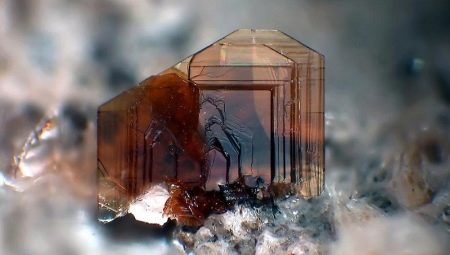
Biotite is a mineral that is also known as odenite and iron mica. It represents translucent plates or less transparent crystals. This mineral can be seen in various shades: bronze, yellow, dark green, reddish brown, and black.
Scientists continue to study the useful properties of the stone, so biotite can bring even more useful discoveries to mankind.

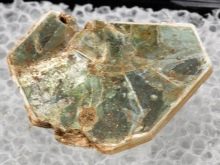
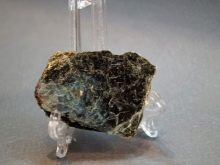
What it is?
The study of this mineral began in the 19th century. Its research and description was actively pursued by Jean-Baptiste Biot, a military specialist, academician, physicist and mathematician, after whom the stone was named. Mineralogist Johann Hausmann continued the work begun by the French scientist and distinguished a separate group of biotite substances. Only by the beginning of the 21st century, knowledge about the stone could be called relatively complete.
Biotite is often found in nature; in total, its presence in the earth's crust is about 2-3%, which is a significant indicator. Most often, the word biotite means brown or black shiny mica, but also the concept of biotite can replace the group of ferro-dominant members of the phlogopite - annite series.

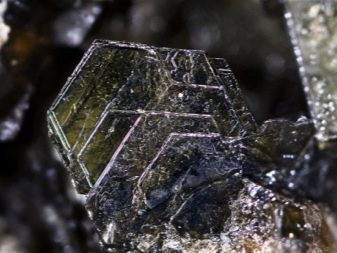
In nature, you can see very large stones, collectors are eager to acquire them. This is not surprising, because even among these seemingly nondescript stones one can find large plates, which, in their ability to reflect an image, resemble a mirror.
Note that not so long ago there was an opinion that biotite cannot be classified as a mineral. Scientists have decided that it is a solid solution of various natural substances.But for now, we will focus on the traditional point of view, which implies the status of a mineral in biotite.
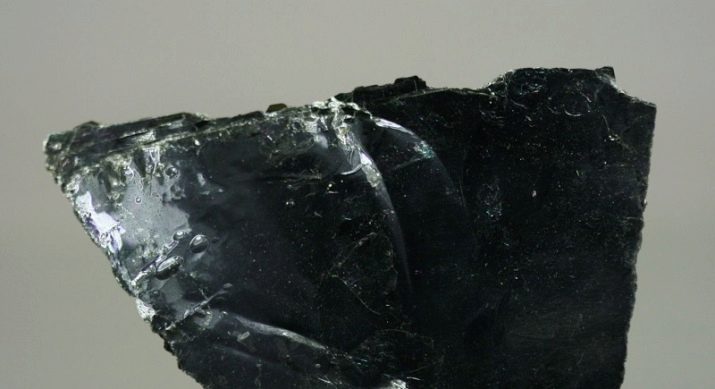
Origin
There are several types of mineral in origin, depending on this parameter, biotites are subdivided into the following groups:
- granitewhich is contained in the rocks of magma;
- metamorphic - found in shales or gneisses;
- pegmatite - present in basalt deposits.
Less often, scientists come across the third group of biotite from this classification. The closest companions of these stones include feldspars, potassium micas, garnets, and aluminum silicate.
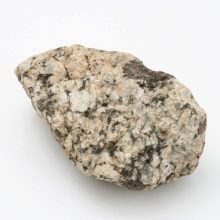
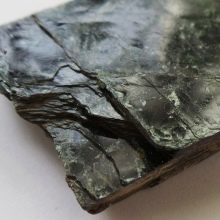
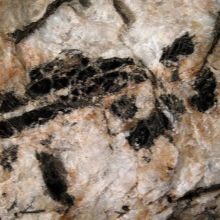
Chemical composition
Crystals of the mineral have different colors, which are determined by the impurities of the rock. Specimens of black, brown colors are distinguished, sometimes stones with a green or reddish tint are found in nature. Crystals of the mineral are columnar or tabular. The leaves can be characterized as elastic, this mineral is more elastic than many others. Light can penetrate biotite plates.
The fusibility of the stone is not the same for different types. For example, Miass biotite melts from 11.5 thousand degrees. The chemical composition of the stone also varies and can only be delineated within certain limits. As a rule, the structure of the stone implies the following components: potassium oxide occupies from 4.5 to 8.5%, magnesium oxide from 0.3 to 28%, ferrous iron oxide - from 2.8 to 27.5%, aluminum oxide - from 9.5 to 31.5%, silicon oxide from 33 to 45%, water from 6 to 11.5%.
Oxides of lithium, sodium, barium, titanium, manganese, strontium, cesium, etc. are also found in biotite as impurities. They can impart a small radioactive background to the stone. To decompose a mineral, you need to act on it with a concentrate of sulfuric acid.
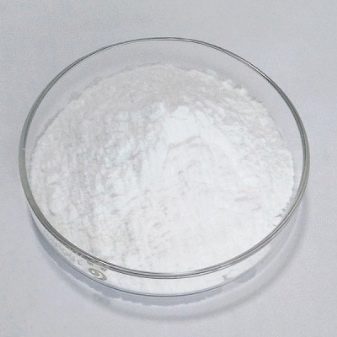
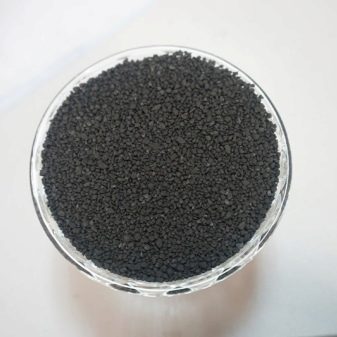
Views
As we have already said, the color of the biotite stone differs depending on the impurities. Let us list the main types of biotite depending on this parameter.
- Lepidomelans - have a rich black color.
- Meroxenes - transparent due to the low concentration of iron impurities.
- Rubellans - they are distinguished by brown or terracotta shades.
- Siderophyllites - they lack magnesium, but there are many iron impurities. Therefore, the color of these unusual stones is greenish.

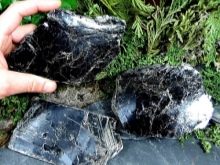
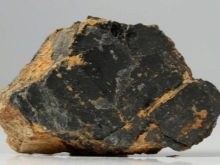
Place of Birth
In deposits, he finds biotite in various forms. It is found in the form of lamellar, scaly and columnar formations. This stone is often found in rocks adjacent to feldspars, granites, muscovites and andalusites. Biotite is so widespread that among micas it is second only to muscovite in quantity. Therefore, it makes sense to mention only the most famous deposits.
In the Ilmen mountains, the stone comes across as a minor mineral in pegmatite veins. There it occurs in the form of plates up to half a meter in diameter or in crystalline form. In the Borshchovochny Ridge, biotite is found on the Slyudyanka River. Large plates of biotite are found in Greenland, as well as in Scandinavia - even seven-meter plates are found on these lands, which is a large size. In Germany, this mineral is included in granites; in the Granulite Mountains, biotite pegmatites are often found. Also famous sources of the mineral are located in the Burgmau and Turengen Forest areas.


Properties
The stone is characterized by a glassy luster, its specific gravity is 2.8-3.4 g / cm3. For some species, the presence of a trait is characteristic. Possesses perfect cleavage, can decompose into leaves. Interference coloration in red, blue, green tones. The hardness of the stone is not very high - it cannot scratch glass.
If erosion occurs, then biotite takes the form of a placer with all its features; it is easily separated with the finest silty material in stagnant waters. The mineral biotite-vermiculite appears. After a certain time, the resulting stones acquire a golden color due to the sparkles, which, when washed, leave in the sediment.
The people can hear such a name of the obtained mineral as "cat's gold".
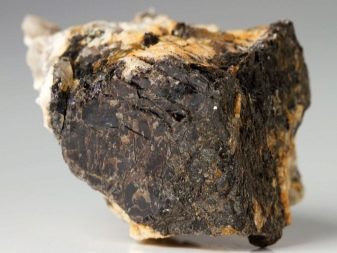
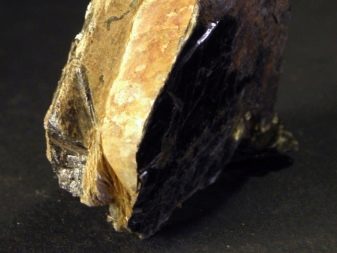
Lithotherapists note the ability of the mineral to treat nervous disorders, eliminate anxiety, stabilize the pulse and establish healthy sleep in people who suffer from insomnia. Biotite improves the protective functions of the body, and also stabilizes the endocrine system, helps to normalize blood sugar levels. Among the connoisseurs of minerals, biotite is known as a stone with some magical properties. They can vary depending on the colors in which the biotite is painted.
- To gain material well-being, you need to put pieces of a mineral in bronze tones in your wallet.
- In order for peace and tranquility to reign in the soul, experts advise to carry green copies with you.
- Pink and red stones guard the family hearth. They also help to find happiness in personal relationships.
There is a belief that in the hands of magicians, biotite becomes a guide to higher powers, it helps seers to penetrate the secrets of the future and increase intuitive perception. It also removes blocks at the energetic level and helps to unleash potential.


Practical use
The practical application of biotite includes various fields.
- Mechanical engineering. Since biotite, like all other micas, perfectly insulates, it is actively used in electronics, namely in the creation of devices necessary in shipbuilding and aircraft construction. Plates have found application in the development of navigation devices. For the production of small appliances, the mineral is also widely used, for example, in the production of microwave ovens.
- Construction. Biotite is part of vermiculite, so it is used as a filler to create sound insulation and thermal insulation in houses. Its decorative properties are also appreciated - it can be used for facing wood panels, giving them a more beautiful and expensive look. Also, mineral powder is sometimes added to shingles.
- Gardening. Due to the good ion exchange of the stone, it is saturated with liquid fertilizers with microelements useful for plants.
- Repair. In the manufacture of various paints and enamels, biotite is added to obtain heat-resistant coating compositions.
- Cosmetic industry... Small pearlescent particles are obtained from the stone, which are added to powders and other decorative cosmetics.
- In jewelry... Using the cabochon method, craftsmen obtain stones that adorn various jewelry: rings, earrings, pendants, pendants, etc. A scattering of biotite in feldspar gives a stone called aventurine. It is also interesting that the rarest effect for emeralds - a six-rayed star is obtained if biotite particles fall into the crystal.
- In geology. Scientists use the isotope geochronological method to determine the age of rock fragments from biotite.
- Decor... The mineral can be used to create sequins for toys and theatrical decorations.

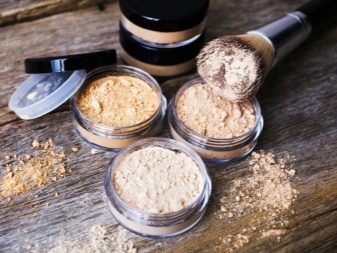
Despite the fact that the field of application of the mineral is already quite wide, it is still being studied closely and new promising directions are being found. So, biotite is a very common mineral that is found in different parts of the planet. It serves as a material for the creation of technology, including large units in mechanical engineering, construction, in the cosmetic industry and other areas.
Mineral lovers try to get especially large and beautiful specimens for their collections.
In the next video, you can take a look at biotite in motion.








